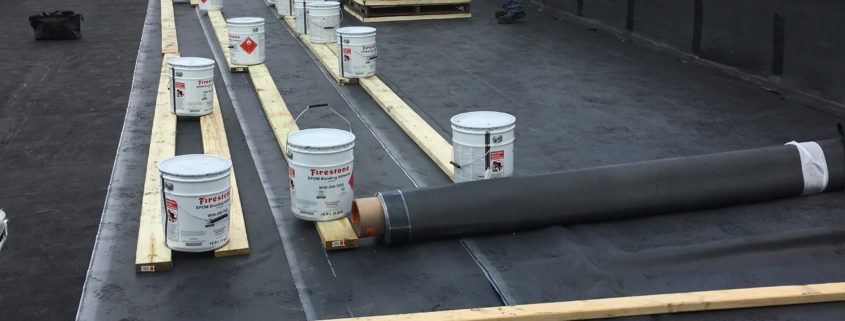The roofing industry is projected to grow to over $5 billion within the next several years. And, with so much investment and time spent on roofing, the field is constantly evolving to include new or improved options, including rubber roofing.
But, how do you know if a rubber roof is the best option for your situation? With this quick review of the pros and cons of rubber roofing, you’ll be able to tell if rubber roofing will provide you with the quality you need.
Pros of Rubber Roofing
In many ways, rubber roofing is a sort of miracle product. When listing the pros and cons of this particular roofing option, the list definitely favors the pros.
Long-Lasting
A rubber roof can last 40 years or more, making it an investment that pays off more and more as the years go by (when you don’t have to pay to re-do your roof every 15-20 years).
Moves With Your Building
One of the reasons a rubber roof lasts so long is because of the fact that rubber is flexible. And, even though you can’t see it, over many years, your building actually changes shape.
Your building can lose or gain moisture, and can warp as temperature fluctuations cause it to expand and shrink. Over time, your shifting property can even pull away from your roof, creating leaks where water and air get in.
Fortunately, rubber roofing systems move with your building, allowing it to maintain a tight shield against the elements for decades.
Highly Resistant
Another reason rubber roofs last so long is that they resist many kinds of damage that plague other systems. Modern rubber systems are UV stable, making them immune to the beating sun. They are also resistant to fire.
Additionally, your rubber roof will resist pests, mold and mildew.
Low Maintenance
Rubber roofing systems can last a long time, but only if you are diligent in taking good care of them. A twice-a-year preventative maintenance check is typically enough to help your roof stand the test of time.
Fewer Leaks
Rubber roofs have fewer leaks because there are fewer gaps in the roofing materials. It comes in large sheets and can provide hundreds of square feet of coverage in a single section with no gaps.
Lightweight
Rubber makes for lightweight roofing material, one of the reasons why this system is easy and cost effective to install (as well as to transport).
Easy Installation
The ease of installation for rubber roofing systems often helps to reduce the overall price. So, not only do you save money over time, but you also save money upon installation.
Lower Energy Costs
Rubber roofs are effective at blocking out the heat of the sun, helping to keep your building cool and giving your air conditioning bills a break. At the same time, rubber roofs are good at keeping heat in, providing excellent insulation that will help lower your heating bills, as well.
Cons of Rubber Roofing
Experienced Installers Can be Hard to Find
Rubber roofing needs to be properly installed. If not, you run the serious risk of leaks and having to have the installation done over again. Adding to the difficulty is that some contractors list themselves as knowledgeable in rubber roof installation when they are not.
It pays to be careful when searching for a commercial roofing contractor that has actually installed rubber roofs, preferably many times.
Appearance
People are split on the aesthetic appeal of rubber roofs. Not everyone likes the simple, clean look of a rubber roof. Ultimately, this is a question of taste, so do some research before you buy one and decide for yourself.
Not Impact Resistant
As we said before, rubber roofs are more resistant to fire, water, pests, mold, and mildew than most alternatives. However, they can be punctured. A falling tree branch can easily tear your roof, something to keep in mind if your building is surrounded by trees or anything else that might strike your roof.
A Worry-Free Roof
These rubber roof pros and cons clearly show that as long as regular preventative maintenance is accounted for, a rubber roof system is an excellent choice that will last for years.
Check out more roofing articles and resources on our blog today!





